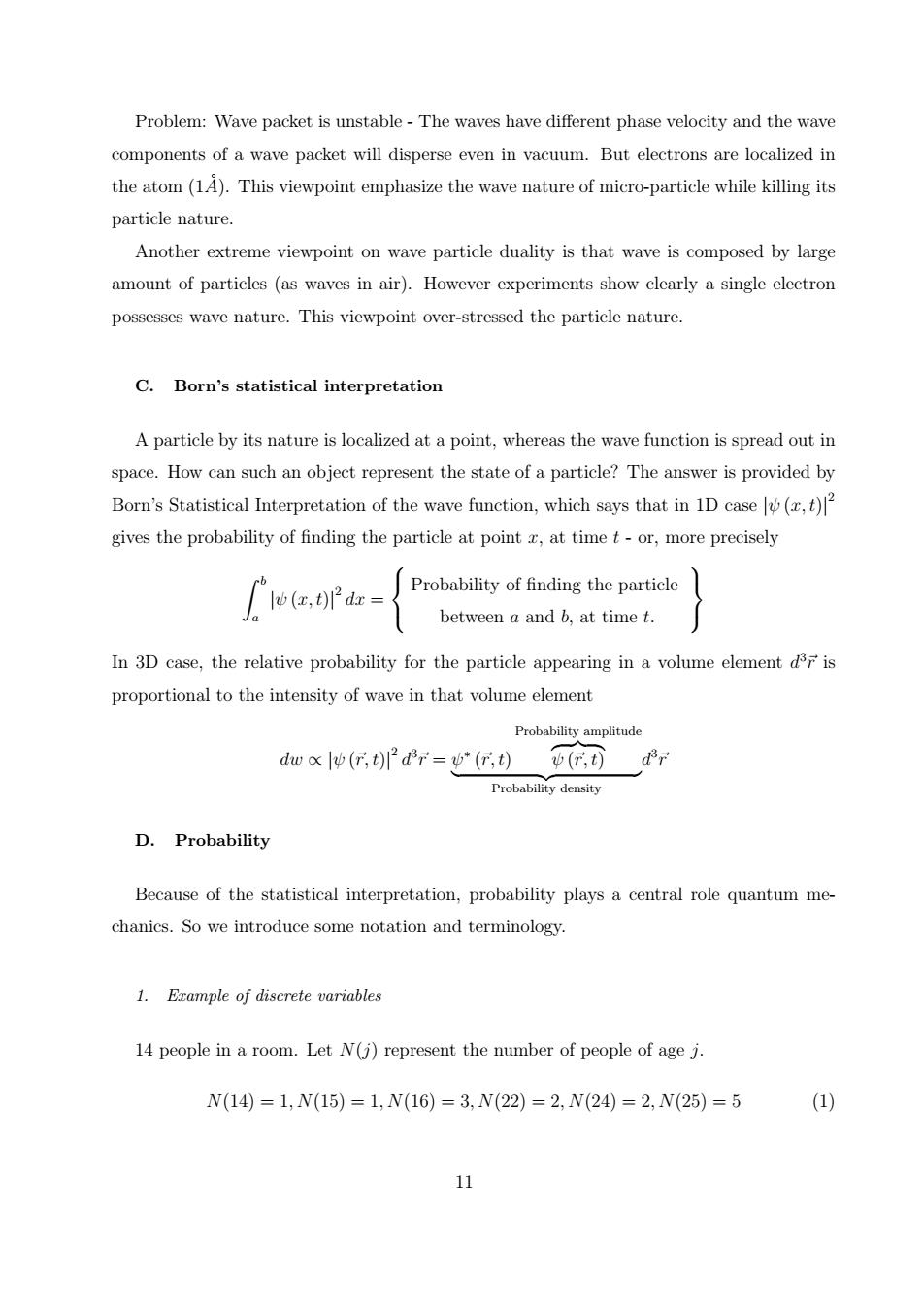正在加载图片...

Problem:Wave packet is unstable-The waves have different phase velocity and the wave components of a wave packet will disperse even in vacuum.But electrons are localized in the atom(1A).This viewpoint emphasize the wave nature of micro-particle while killing its particle nature. Another extreme viewpoint on wave particle duality is that wave is composed by large amount of particles (as waves in air).However experiments show clearly a single electron possesses wave nature.This viewpoint over-stressed the particle nature C.Born's statistical interpretation A particle by its nature is localized at a point,whereas the wave function is spread out in space.How can such an object represent the state of a particle?The answer is provided by Born's Statistical Interpretation of the wave function,which says that in 1D case(,t) gives the probability of finding the particle at point,at time tor,more precisely fleG.OPa- Probability of finding the particle between a and b,at time t. In 3D case,the relative probability for the particle appearing in a volume element dis proportional to the intensity of wave in that volume element Probability amplitude d加x(,t=(,)D Probabllity density D.Probability Because of the statistical interpretation,probability plays a central role quantum me- chanics.So we introduce some notation and terminology. 1.Erample of discrete variables 14 people in a room.Let N(j)represent the number of people of age j. N(14=1,N(15)=1.N(16)=3,N(22)=2,N(24)=2.N(25)=5 (1) 11Problem: Wave packet is unstable - The waves have different phase velocity and the wave components of a wave packet will disperse even in vacuum. But electrons are localized in the atom (1A˚). This viewpoint emphasize the wave nature of micro-particle while killing its particle nature. Another extreme viewpoint on wave particle duality is that wave is composed by large amount of particles (as waves in air). However experiments show clearly a single electron possesses wave nature. This viewpoint over-stressed the particle nature. C. Born’s statistical interpretation A particle by its nature is localized at a point, whereas the wave function is spread out in space. How can such an object represent the state of a particle? The answer is provided by Born’s Statistical Interpretation of the wave function, which says that in 1D case |ψ (x, t)| 2 gives the probability of finding the particle at point x, at time t - or, more precisely Z b a |ψ (x, t)| 2 dx = Probability of finding the particle between a and b, at time t. In 3D case, the relative probability for the particle appearing in a volume element d 3~r is proportional to the intensity of wave in that volume element dw ∝ |ψ (~r, t)| 2 d 3 ~r = ψ ∗ (~r, t) Probability amplitude z }| { ψ (~r, t) | {z } Probability density d 3 ~r D. Probability Because of the statistical interpretation, probability plays a central role quantum mechanics. So we introduce some notation and terminology. 1. Example of discrete variables 14 people in a room. Let N(j) represent the number of people of age j. N(14) = 1, N(15) = 1, N(16) = 3, N(22) = 2, N(24) = 2, N(25) = 5 (1) 11